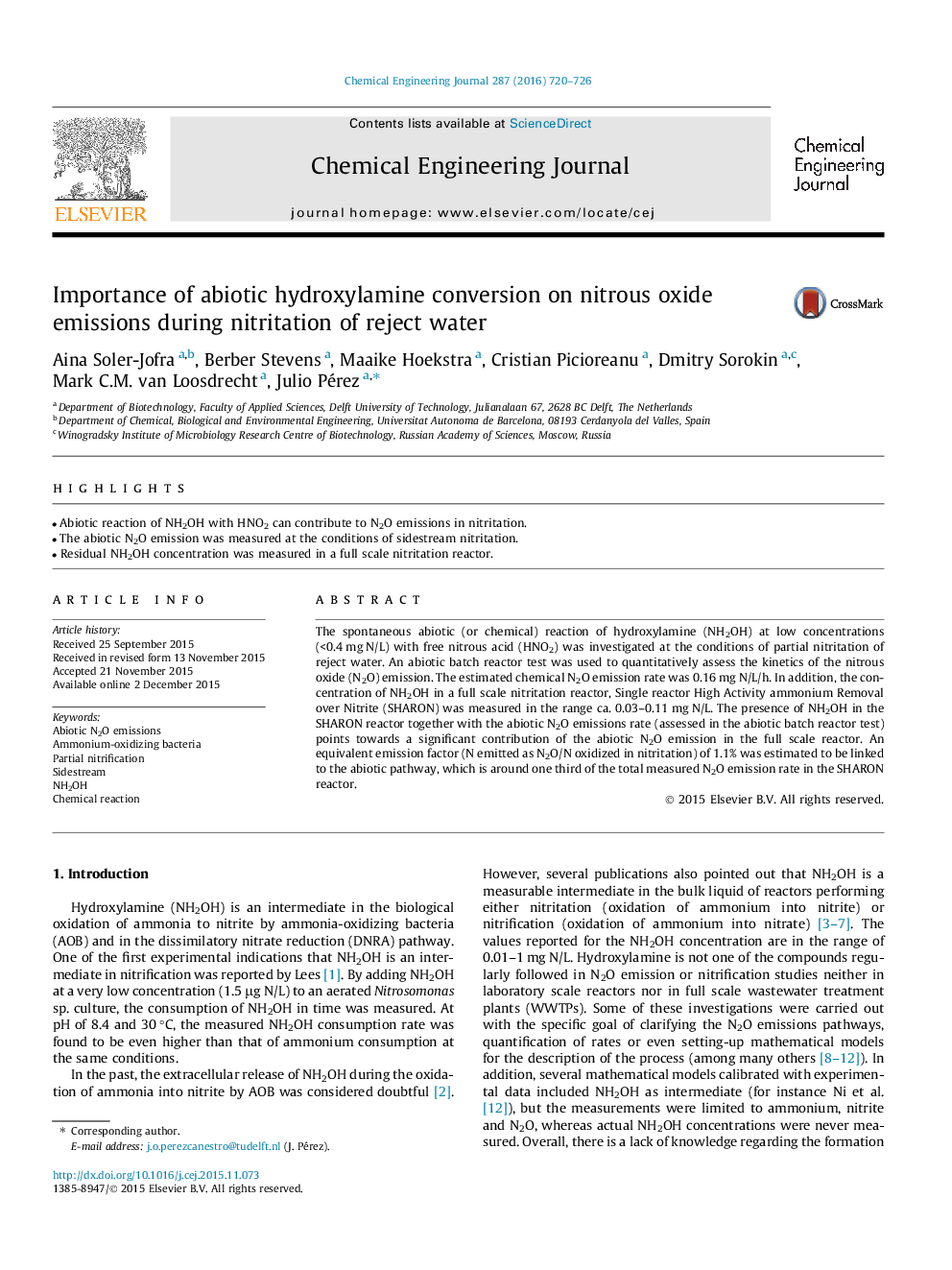| Article ID | Journal | Published Year | Pages | File Type |
|---|---|---|---|---|
| 145917 | Chemical Engineering Journal | 2016 | 7 Pages |
•Abiotic reaction of NH2OH with HNO2 can contribute to N2O emissions in nitritation.•The abiotic N2O emission was measured at the conditions of sidestream nitritation.•Residual NH2OH concentration was measured in a full scale nitritation reactor.
The spontaneous abiotic (or chemical) reaction of hydroxylamine (NH2OH) at low concentrations (<0.4 mg N/L) with free nitrous acid (HNO2) was investigated at the conditions of partial nitritation of reject water. An abiotic batch reactor test was used to quantitatively assess the kinetics of the nitrous oxide (N2O) emission. The estimated chemical N2O emission rate was 0.16 mg N/L/h. In addition, the concentration of NH2OH in a full scale nitritation reactor, Single reactor High Activity ammonium Removal over Nitrite (SHARON) was measured in the range ca. 0.03–0.11 mg N/L. The presence of NH2OH in the SHARON reactor together with the abiotic N2O emissions rate (assessed in the abiotic batch reactor test) points towards a significant contribution of the abiotic N2O emission in the full scale reactor. An equivalent emission factor (N emitted as N2O/N oxidized in nitritation) of 1.1% was estimated to be linked to the abiotic pathway, which is around one third of the total measured N2O emission rate in the SHARON reactor.
